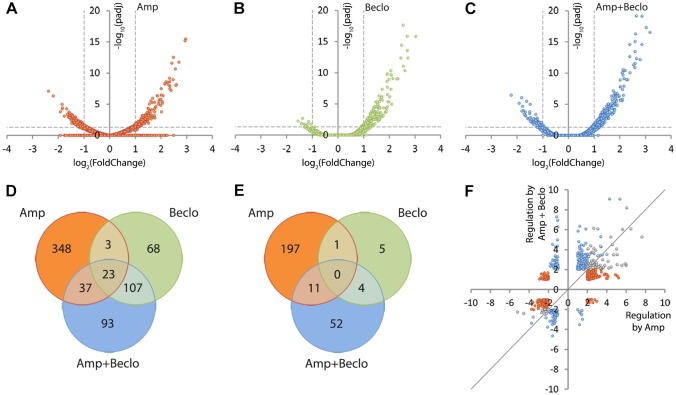Fig. 5.
Macrophage-specific transcriptome analysis by RNA-seq showing modulation of amputation-induced gene regulation by beclomethasone. (A-C) Volcano plots indicating the fold change (x-axis) and P-value (y-axis) of the regulation for individual genes by amputation (A), beclomethasone (B) and the combined amputation/beclomethasone treatment (C), compared to the non-amputated, vehicle-treated control group. (D-E) Venn diagrams showing overlaps between clusters of genes significantly upregulated (D) or downregulated (E) by amputation (Amp), beclomethasone (Beclo) and the combined amputation/beclomethasone treatment (Amp+Beclo). The diagrams show that there is a large number of genes regulated by amputation in macrophages. Beclomethasone affects the expression of a relatively small number of genes, but it decreases the number of genes significantly regulated upon amputation. (F) Scatter plot showing the effect of beclomethasone treatment on amputation-regulated gene expression. For all genes showing significant regulation upon amputation (red and gray dots) or the combined beclomethasone and amputation treatment (blue and gray dots), the fold change due to beclomethasone and amputation treatment was plotted as a function of the fold change due to amputation (gray dots represent the overlap between amputation and combination treatment). The gray line indicates the point at which beclomethasone treatment does not alter amputation-induced gene regulation. Of all the genes that were significantly regulated by amputation in macrophages, 75.37% showed attenuation in the presence of beclomethasone. Paired analysis were performed using DESeq (v1.26.0) R package by comparing each group to the control group (non-amputated/vehicle treated). Significantly regulated genes were selected by using a p.adj<0.05 and |FoldChange|>2 cutoff.

